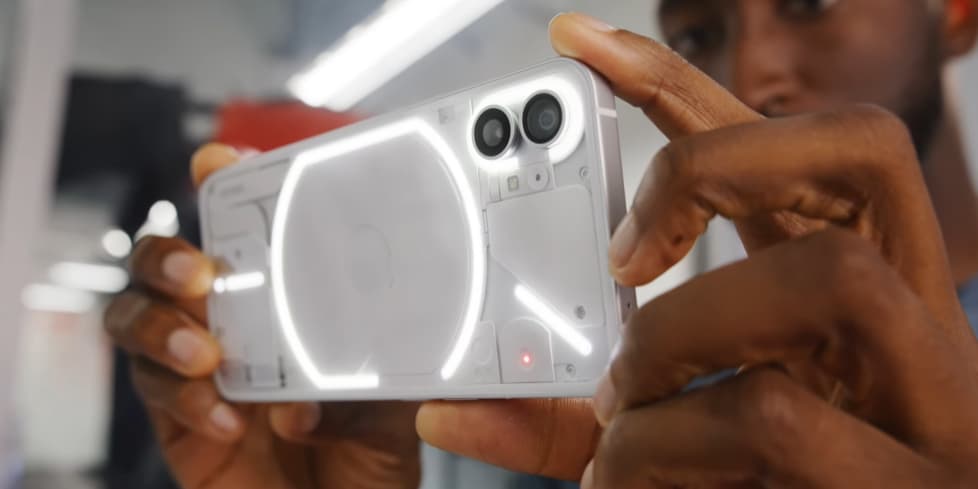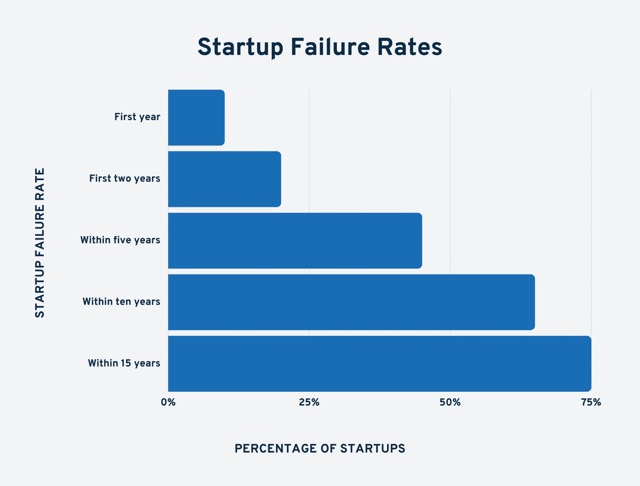
Yesterday, Nothing announced its upcoming Nothing Phone (1) would not launch in the United States. There were plenty of people in the tech community that were outraged that Nothing had been marketing their device so much in the United States to just turn around and ignore it on their first major device launch. While it might feel like a betrayal or that Nothing is ignoring millions of tech enthusiasts in the US, it makes sense for them to not launch the Phone (1) here. Let me explain.
Brand loyalty is a massive deal
Look, brand loyalty is one of the biggest sellers of products worldwide, both in and out of tech. In 2019, 90.2% of consumers reported being loyal to a brand – this is especially true when it comes to the tech market in the US. Customers who use Samsung, Apple, and Google products are more than likely to continue buying from that company, and it’s overwhelmingly difficult to break said loyalty. Most of this is out of Nothing’s control. Even if they did, the customer acquisition cost (CAC) would likely be incredibly high, making it not worth the marketing dollars spent on it.

Even looking at Nothing at a technical level, the Phone (1) doesn’t offer any meaningful new features or specs to make it worth switching to a consumer. It’s a $500~ phone running a mid-range processor with an average display, dual cameras, and boring design, outside of the LEDs on the back that will just be covered by a case. The device offers nothing that will create FOMO (fear of missing out) in customers, or any features that make leaving a current and likely already heavily invested in ecosystem. The brand loyalty of Samsung, Apple, and Google is too strong and Nothing offers, well, nothing.
Nothing can’t compete with Google, Samsung, and Apple without carriers
There is no room at carriers for the Nothing Phone (1) right now: It’s another $500 phone that really doesn’t bring to the table outside of an unusual design. There are plenty of better phones in that price range on the US market that carriers already sell from much bigger players. Nothing would never be able to afford or manage the sales reps for carrier stores on the scale of Apple, Samsung, or Google to train store employees.

You might be wondering why I’m focusing on specifically carriers. Well, it’s because that’s what makes up the US market.
According to NPD Connected Intelligence research group, there were 50.1 million active unlocked smartphones being used in the US in 2020. That number of phones is just 17% of the 294.15 million total active smartphones in the US. It doesn’t make sense to focus on the minority who are likely more unwilling to buy a device, because they aren’t being forced to by contracts and payment plans.
Those other 244 million devices would be locked to and sold through carriers, likely on payment plans that are subsidizing the costs of devices. This allows great financing deals that keep you on the carrier and device, but also allows for the price of a $1000 phone to be spread into payments of $24 a month for 36 months with $150 down payment, the now standard term for a US carrier financing deal. With the average sales price of a 5G phone in the US most recently being $815, a $500 phone doesn’t seem to fit the market.
A $300 phone that can be given away as a promotion with a trade-in or new line would do well at carriers – as well as a $1000 phone that can be financed. A $500 financing plan doesn’t make as much sense when the difference between that and $1000 financed is about $10 per month (since $500 phones usually won’t have a down payment).
Meanwhile, spending $500 in cash also doesn’t make sense when the Pixel 6, a well-marketed device with a better camera and processor from a name brand, is $600 and likely discounted outside of carrier subsidization. The Nothing Phone (1) is a phone without a place in a market that likely isn’t willing to accept it.

Ignoring carriers, if Nothing wanted to sell their device unlocked and offer their own financing to sell the Phone (1) through their website, it would need to find a bank that would be willing to handle the financing. Banks like TD Bank are the ones who handle financing for companies like Samsung on Samsung’s financing plans, not Samsung themselves. In an unstable market, banks likely aren’t willing to work with startups on financing consumer devices like this. Without carriers subsidizing the phone, it’s unlikely Nothing would see massive sales.
To reach the US market in a meaningful way, Nothing would need either a unique flagship or a very cheap device on a US carrier. The Nothing Phone (1) is neither of those and realistically could never make it into carrier stores right now.
It would cost way too much to launch on carriers
Let’s put it simply: It costs a lot to launch phones in the US.
A Samsung phone on T-Mobile, for example, has 38 cellular bands (35 without mmWave), along with Wi-Fi, Bluetooth, wireless changing, and NFC – all of which the Nothing Phone (1) has. These all need to be tested and approved by the FCC, which can be incredibly expensive. Without this testing it is illegal to sell a device in the United States. If the device doesn’t meet FCC standards, that could mean weeks or months of follow up engineering to make the device work within US standards, which gets costly.
FCC testing itself isn’t that expensive, but Battery UL and carrier certification is. Battery UL certification, which tests to make sure the battery meets a nationally-recognized safety standard, is optional but almost necessary in the US and can cost tens of thousands of dollars. Carrier certification, on the other hand, will cost millions. If the phone were to include mmWave as well, that would require mmWave certification from Qualcomm and licenses for the mmWave patents as well, which can be up to seven figures. Added up, it can be incredibly expensive
There is also carrier certification. Manufacturers like Nothing would need to send devices into carriers like T-Mobile, AT&T, and Verizon and let them test on their networks. This isn’t just to be sold on those networks, but to use the full access of the networks. If the Phone (1) didn’t meet one of the carriers standards, that would require Nothing to fix the phone and send it back in for testing. Not only would that take weeks, but it would delay software updates, like what we see with Samsung phones. Without that carrier certification, you wouldn’t be able to use Voice over LTE on AT&T, along with no 5G, spotty (if any) service on T-Mobile, and no service at all on Verizon.
Nothing is a startup, whether they feel like it or not
With all the hype for Nothing, it might not feel like it, but the company is a startup.
Nothing doesn’t have the backing of a billion dollar multi-national company like Xiaomi or OPPO if they need funding or parts. This means it needs to have investors and bank funding. This means debt, loans, and enormous lines of credit.
Nothing, unlike most companies, cannot afford for a phone to fail in a market. To be able to pay back these debts, it can’t afford a failure – spending well into the millions of dollars to not make that back simply isn’t sustainable.

There are also costs that are ongoing after the device launches, which includes paying for carrier certification with each update it tries to push. When doing monthly security updates, that’s a monthly expense that is only worth it if it sells well. If it’s not, it’s just burning money. You might think, “Well if it doesn’t sell well just cut your losses and stop with US updates.” That’s even worse, because it means bad press from every major tech news outlet and YouTuber until Nothing agrees to burn more money, and probably burning bridges with customers as well. Just look at the situation Qualcomm has been recently in with its Snapdragon Insiders phone.
Beyond that, Nothing would need a US support line for customer service, a repair program for broken products, a system to do warranty claims for devices, a distribution network for shipping devices, warehouses to store the products, and plenty more that I didn’t list. These are all investments it doesn’t make sense to make in a market where the phone is destined to fail.
After this news about the Nothing Phone (1) not launching in the US broke, I saw some Twitter users saying something along the lines of, “If you don’t try you can’t succeed.” Quite frankly, that doesn’t work for startups when it comes to risking millions of dollars. This product failing could mean they aren’t able to invest as much into future products, future growth, or support.
Do you think Nothing will ever launch a phone in the US?
I wouldn’t be shocked if Nothing took their time to launch in the US – I could see them waiting two or three generations until they have a true flagship product. A true flagship device developed in-house cost in the realm of $100 million; they can’t just throw together $100 million+ from financing and investors to create a project like that, because it would likely fail without any brand loyalty or track record. It’ll take time.
If and when Nothing does end up making it, Nothing could make a great phone for the US, but that time is not now. Instead, Nothing is going to create a device they know will appeal broadly for everyone in markets that are less costly to enter.
That’s all ok if Nothing can make it a few more generations and release a few more devices – then, we might get what we as tech enthusiasts want. Until then, however, a little patience is needed. Nothing knows what they’re doing; I trust they’ll make the right decisions down the road.
FTC: We use income earning auto affiliate links. More.

Comments